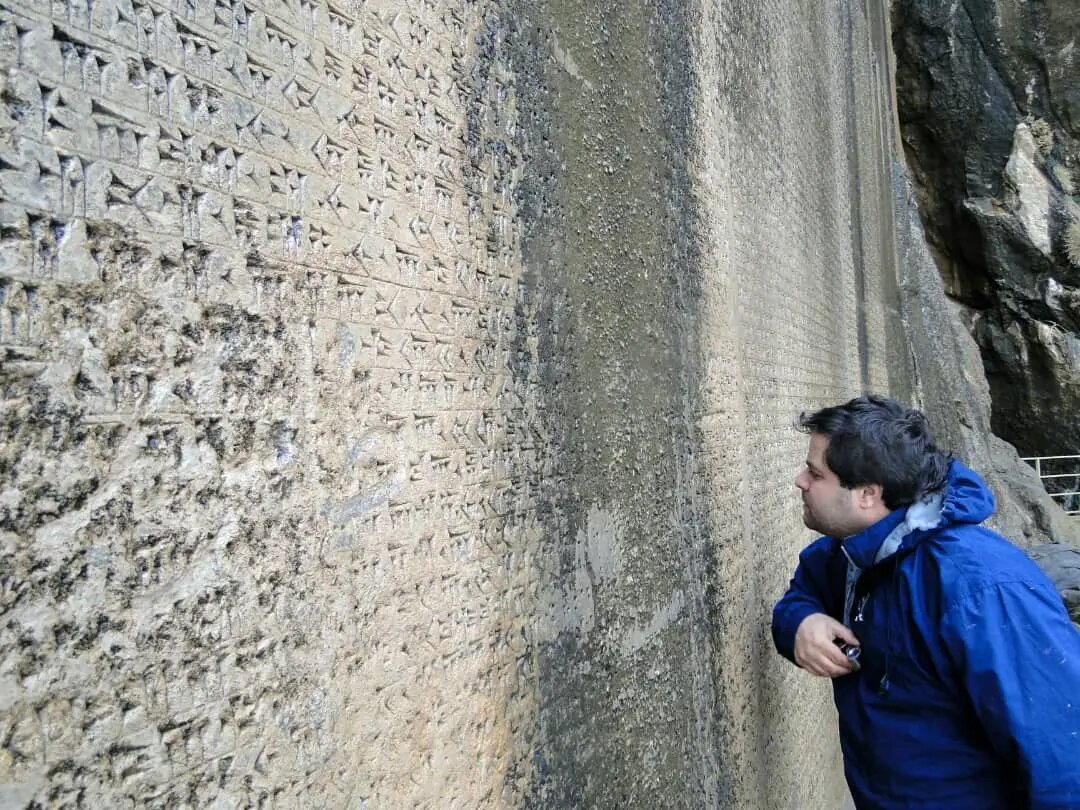Lichens threaten Iran heritage sites; Bisotun leads most severe erosion

TEHRAN - For more than two decades, experts and cultural heritage specialists have been reporting on the crisis of lichen penetration in some of Iran’s cultural heritage sites and monuments.
The growth of various types of lichens, which remain largely unidentified, is believed to pose a significant risk to many inscriptions, buildings, and historical rock formations.
Mohammad Sohrabi (lichenologist and former head of the Research Institute for the Preservation and Restoration of Historical Monuments), who has spent years identifying, monitoring, and studying the growth of lichens on historical monuments and ancient inscriptions in Iran, now describes the condition of Iran’s historical structures as highly damaging and unstable in terms of biological degradation, ISNA reported.
“Currently, we witness the most dangerous and severe biological degradation caused by the growth of lichens in Bisotun, followed by other World Heritage sites of Persepolis, the Sassanid Archaeological Landscape of Fars Region, Tchogha Zanbil, Susa, [Gonbad-e] Soltaniyeh, Gonbad-e Qabus, Takht-e Soleiman, and some caravanserais, among others.”
The expert said that so far, some 500 species of lichens -- with different erosion rates -- have been identified growing on Iran’s historical buildings.
Sohrabi, who also presides over the Iranian Lichen Museum, says:” Lichens are symbiotic organisms that grow on rocks, stones, tree trunks, and branches and can live up to 4,000 years.”
He said Iran is home to 2,500 to 3,000 species of lichens, of which 1,000 have been identified so far, with some half of the identified ones being associated with historical artifacts and buildings.

“In the ongoing lichenology research at the Iranian Lichen Museum and by doctoral students under my supervision, we are witnessing new reports of lichens across the country, and some species are even being discovered for the first time in the world of lichenology, with my students preparing articles on these new species.”
Unfortunately, due to legal limitations and the lack of necessary financial support, no progress has been made in assessing and determining the rate of destruction of each lichen species and its damage to the cultural heritage.
He said, a majestic structure like Persepolis, currently faces very serious lichen damage due to the lack of sufficient budget.
“A categorized list of destructive and non-destructive lichen species of Persepolis has been prepared, but due to the lack of necessary financial support, further studies on this structure are still ambiguous.”
Sohrabi believes not all lichens in historical sites and World Heritage sites are destructive. “For example, this phenomenon is clearly visible on the surfaces of natural stones around the lake of Takht-e Suleiman, and even on the surfaces of stones in the village of Kandovan.”
“This type of lichen growth indicates untouched natural substrates and, like an insulator, protects the historical site of Kandovan from natural elements. Therefore, there is no need to remove lichens from these sites. However, some others have penetrated the surfaces of ancient stones and rocks, causing their destruction in any case.”
He said what is important is first to identify all lichens in historical sites, differentiate critical and non-critical points, grade these points concerning the active presence of lichens, and then mitigate and remove them from historical artifacts.
Expert emphasizes that in all of Iran’s stone artifacts, there is a biological degradation crisis caused by lichens.“In my opinion, sampling for DNA analysis and using molecular identification methods elevate Iran’s World Heritage standards, and it is possible to identify destructive and non-destructive species with minimal time.”
“It should be noted that sampling and specimen preparation for lichen substrate studies are still a necessity. We will never allow any harm to come to historical surfaces,” the expert explained.
So far, nearly 40,000 images have been taken of lichen presence from various points of Iran’s historical buildings and sites, but these images are not sufficient; identifying these lichen species requires DNA sampling.
“Removing lichen damage from historical buildings requires the compilation of a lichen atlas and conducting DNA analysis, which is a time-consuming and costly endeavor.”
Sohrabi emphasizes that in all of Iran’s stone artifacts, there is a biological degradation crisis caused by lichens; this is a national need, which is why the Iranian Lichen Museum was founded in 2017 to fulfill this national mission in the country.
“We have no shortage of equipment or conducting relevant experiments in the country in studying biological degradation caused by lichens.”
AM
Leave a Comment